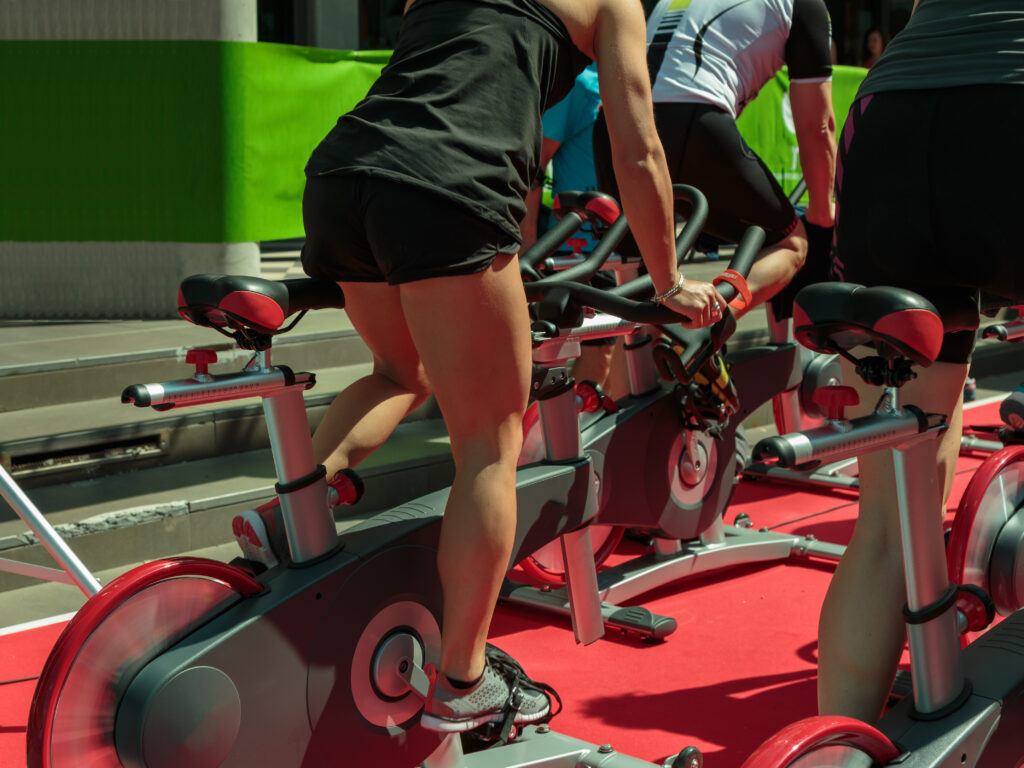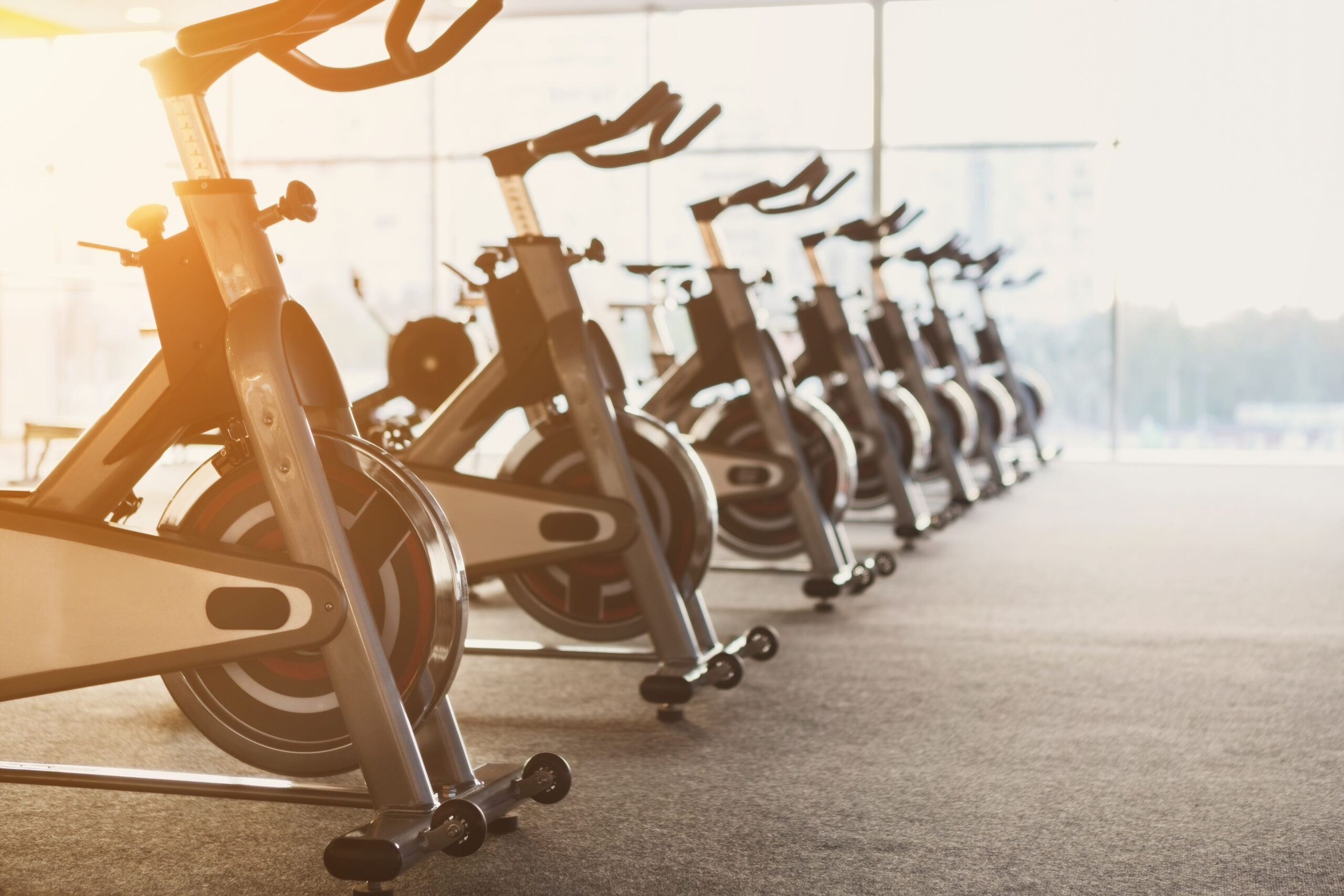When it comes to exercise bikes, few topics get as much attention as flywheel weight. And with so much conflicting information out there, things can get a little confusing.
Are heavy flywheels better than light ones? How heavy is heavy enough?
What about rear mounted flywheels, are they better than front mounted ones?
Does flywheel weight matter for recumbent bikes?
Well, in this guide I’m going to answer all the above questions and more. This article is dedicated to everything 100% flywheel related.
After reading, you’ll know everything you need to about exercise bikes and flywheels.
Let’s start at the beginning.
Why Do Exercise Bikes Have Flywheels?
Just to make sure we’re all on the same page here – an exercise bike’s flywheel is the weighted wheel that spins as you pedal.
The flywheel is found on the front of most bikes, although now there are more and more spin bikes with the flywheel positioned in the rear (more on these bikes later).
And even though we usually think of indoor cycles when talking flywheels, all types of exercise bikes actually use a flywheel in one form or another.
The flywheel’s job is to help provide the resistance, but it also has a lot to do with determining how smooth the pedal motion feels as well.
Keep in mind, exercise bikes are designed to mimic the feel of riding outdoor bikes (especially spin bikes).
On a road bike, when you pedal the rear tire spins, propelling you down the road.
Well, exercise bikes are stationary, so the bike itself can’t move, but the flywheel still can.
And you can mimic the sensation of riding up hill or on flat roads by applying forces to that spinning flywheel, thus affecting the resistance you’re working against.
Most exercise bikes these day use magnetic resistance systems to alter how difficult it is to pedal, but some indoor cycles still use friction brakes too.
Magnetic systems are generally preferred because they’re smoother and don’t require maintenance (you have magnets near the flywheel, but there’s no touching of parts to create resistance).
Friction brakes on the other hand, use felt brake pads that make physical contact with the spinning flywheel to create resistance.
These can work effectively, but you’ll have to replace that brake pad periodically.
So, the flywheel on exercise bikes is a necessary evil to provide the resistance you work against, but it also helps create a smoother pedal feel.
And this is true regardless of whether you’re using a heavy flywheel bike or a light flywheel one.
The flywheel helps create momentum as you pedal and this momentum actually helps keep the pedals moving a little between pedal strokes (more true for heavy flywheels).
This eliminates any awkward lag between pedal strokes, making for a smoother feel during workouts.
Have you ever seen those bike pedalers?
They’re basically a set of pedals that can be placed in front of you while you sit on a chair or couch, allowing you to exercise a little without having to get on a full size exercise bike.
Anyway, the cheap ones don’t have a flywheel and they feel so awkward to use – these are basically what exercise bikes would feel like without a flywheel.
Heavy vs Light Flywheels

Ok, so we’re all on the same page now about what flywheels are and why exercise bikes need them, so let’s get to the most important question out there:
What’s better, heavy or light flywheels?
This is kind of a complicated one and it has a lot to do with personal preference, but I’ll try my best to keep this as straightforward as possible.
The first thing you have to consider when comparing heavy and light flywheel bikes, is whether or not the bike is designed to utilize a light flywheel on purpose.
I say that, because there are plenty of cheap bikes that come with light flywheels because they’re cheap – not because they’re using a light flywheel on purpose.
In these cases, having a lighter flywheel is a disadvantage.
Remember up above when we talked about how the flywheels create momentum as you pedal, which in turn improves the smoothness of your pedal motion?
Well, most home exercise bikes are designed to benefit from a heavy flywheel because this is an easy (and more affordable) way to create said momentum.
More weight spinning means more momentum, which means a smoother pedaling motion.
How heavy is heavy enough?
This rule isn’t written in stone, but any flywheel weighing 30 lb or more should definitely be heavy enough to provide a smooth feel.
These heavy flywheels take a little more energy to get started, but once they’re spinning they do help keep the pedals moving a little.
With this type of design, having a heavier flywheel is beneficial.
So, if a bike is designed like this, but still uses a light flywheel, it probably isn’t going to provide as smooth a feel – as is the case with many cheaper bikes.
I should mention here that we’re talking about all kinds of exercise bikes here, not just spin bikes – many recumbents and upright bikes benefit from heavier flywheels too.
But there are bikes that are designed specifically for light flywheels and these are a completely different story.
Some higher-end cycles are designed to use a light flywheel on purpose and with these guys, it’s all about rotational speed.
Smooth pedal motion is all about momentum, but there are ways of creating that momentum other than simply adding weight to the flywheel.
You can also take a light flywheel and get it spinning really fast – as is the case with elite cycles like Keiser’s M3i and most of the ICG cycles.
These bikes use flywheels in the 7-9 lb range, which is crazy light compared to the 30 – 40 lb flywheels found on most spin bikes, but these light flywheels spin a whole lot faster.
Bikes like the Keiser come with gear ratios in the 1:10 – 1:11 range, basically meaning the flywheel will spin 10 – 11x for every complete rotation of the pedals.
As you can imagine, this gets the flywheel spinning very fast.
It’s more complicated to design and gear a bike like this, so these advanced light flywheel cycles tend to cost a lot more (most start around $2k).
But users pretty unanimously agree that they provide exceptionally smooth rides.
And unlike heavy flywheel bikes, they don’t take as much energy to start from a cold start and they don’t tend to put as much pressure on your joints.
Bikes using light flywheels also utilize magnetic resistance systems, so there’s no real difference there and there’s no real difference in the total amount of resistance when it comes to heavy vs light flywheels either.
That all has to do with the magnetic resistance system itself.
Some elite cyclists prefer the feel of heavy flywheel bikes because it can more closely mimic the feel of riding outside; others prefer the light flywheel design because they say it more closely mimics the feel of riding a road bike.
There is no right answer, it’s all about personal preference.
Just keep in mind whether or not the bike is designed for a light flywheel or if its just using a light flywheel to save money.
Also keep in mind, that like 90% of home exercise bikes are designed to benefit from heavier flywheels – especially bikes that are under $2k.
Front vs Rear Mounted Flywheels
Ok, I hope that section on flywheel weight wasn’t too confusing.
Luckily, the discussion on front and rear mounted flywheels is a lot more straightforward.
All spin bikes use to come with front mounted flywheels and most still do today, but there are more and more brands now offering rear mounted flywheels.
I think Keiser was the first brand to design a cycle like this, but I’m not 100% sure about that.
Either way, these days there are plenty of rear-mounted cycles to choose from, so the real question is one style better than the other?
Nope.
It doesn’t matter whether the flywheel is in the front or the back because it doesn’t change the feel or the performance of the bike whatsoever.
Some brands will say they put the flywheel in the rear to protect it from sweat damage and all that, which I guess could be true.
But most front mounted cycles have shrouds and other protecting parts keeping the flywheel and drive train safe from sweat anyway.
I think it’s all about looks.
And I’ll admit, rear mounted cycles look sleek as hell – certainly more futuristic than the traditional front mounted bikes.
But when it comes to performance, it doesn’t matter where the flywheel is.
Final Thoughts
Well, that about does it for flywheels.
Even though flywheel location and weight isn’t the only thing to consider when comparing bikes, it’s probably the most important spec to consider when it comes to performance.
Flywheel weight will play a huge role in how smooth or not smooth the pedal motion is during your workouts.
And if your bike doesn’t have a smooth pedaling motion, your workouts are going to suffer for it.
When comparing exercise bikes, keep in mind that most home bikes are designed to benefit from heavier flywheels and I’d consider anything around 30 lb or higher plenty heavy to get the job done.
Spin bikes come with the heaviest flywheels, but there are recumbent and uprights out there packing 30 lb flywheels.
If you’re looking for a light flywheel cycle, just make sure you check that gear ratio spec to ensure that flywheel is spinning fast during workouts.
And when it comes to rear vs front mounted flywheels, it doesn’t matter – both perform the same.
I hope you found this guide helpful and if you have any questions or concerns, please leave a comment below and I’ll get right back to ya.




